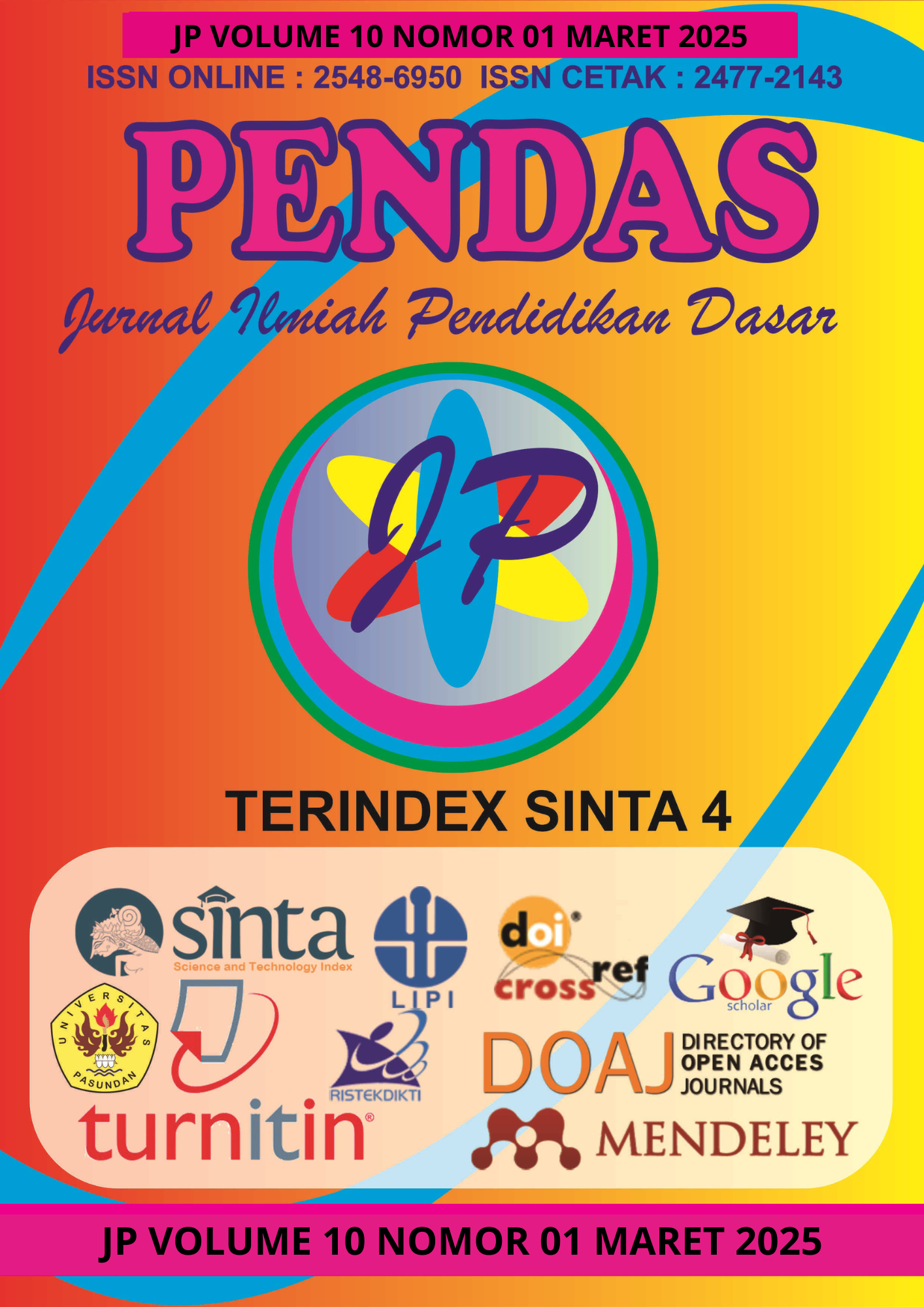KAJIAN LITERATUR TREN PENELITIAN PENGEMBANGAN MEDIA PEMBELAJARAN INTERAKTIF BERBANTUAN CANVA PADA RENTANG TAHUN 2020-2025
DOI:
https://doi.org/10.23969/jp.v10i01.23780Keywords:
Interactive learning, Canva, learning mediaAbstract
The advancement of technology in the education sector encourages innovation in The advancement of interactive learning media, including the use of Canva as a tool in the learning process at various levels. This literature review aims to analyze research trends related to the development of interactive learning media assisted by Canva in the period 2020–2025. This research applies a literature study method by reviewing various scientific articles, proceedings, and related research reports. The study findings indicate that the utilization of Canva in learning at various levels is increasing, especially in increasing student engagement, teacher creativity, and the effectiveness of material delivery. In addition, the study also shows that Canva has advantages in ease of access, design flexibility, and the ability to support various student learning styles. However, its implementation faces several challenges, including limited access to digital devices and the need for training for teachers. In conclusion, the use of Canva as an interactive learning media has great potential In enhancing the quality of education at various levels, but infrastructure support and training are needed for educators so that its implementation is more optimal. According to the findings of the MOST analysis, there are certain shortcomings in The creation of interactive learning media utilizing Canva. Some of them are the lack of support for independent learning without teacher assistance, the need for additional technology to access the media, and the development carried out on materials with phenomena that are actually easy for students to observe
Downloads
References
Aripin, I., & Suryaningsih, Y. (2019). Pemanfaatan media pembelajaran berbasis teknologi dalam mengurangi miskomunikasi pendidikan. Jurnal Teknologi Pendidikan, 12(2), 45-60.
Branch, R. M. (2009). Instructional design: The ADDIE approach. New York, NY: Springer.
Clark, R. C., & Feldon, D. F. (2018). Ten common but questionable principles of multimedia learning. In R. E. Mayer (Ed.), The Cambridge handbook of multimedia learning (2nd ed., pp. 151-172). New York, NY: Cambridge University Press.
Clark, R. C., & Mayer, R. E. (2016). E-learning and the science of instruction: Proven guidelines for consumers and designers of multimedia learning (4th ed.). Hoboken, NJ: Wiley.
Dale, E. (1969). Audio-visual methods in teaching (3rd ed.). New York, NY: Holt, Rinehart & Winston.
Fraenkel, J. R., & Wallen, N. E. (2019). How to design and evaluate research in education (10th ed.). New York, NY: McGraw-Hill.
Freeman, S., Eddy, S. L., McDonough, M., Smith, M. K., Okoroafor, N., Jordt, H., & Wenderoth, M. P. (2011). Active learning increases student performance in science, engineering, and mathematics. Proceedings of the National Academy of Sciences, 111(23), 8410-8415. https://doi.org/10.1073/pnas.1319030111
Garrison, D. R., & Vaughan, N. D. (2018). Blended learning in higher education: Framework, principles, and guidelines. San Francisco, CA: Jossey-Bass.
Herowati, H., & Azizah, N. (2020). Pengembangan media scrapbook berbasis Canva untuk pembelajaran IPA di SD. Jurnal Pendidikan Dasar, 8(1), 12-25.
Jonassen, D. H. (2012). Learning to solve problems: A handbook for designing problem-solving learning environments. New York, NY: Routledge.
Markhus, D., Siregar, N., & Wahyuni, S. (2019). Integrasi model pembelajaran inovatif dalam Kurikulum 2013. Jurnal Kajian Pendidikan, 15(3), 78-92.
Mayer, R. E. (2021). Multimedia learning (3rd ed.). New York, NY: Cambridge University Press.
Mishra, P., & Koehler, M. J. (2016). Technological pedagogical content knowledge: A framework for teacher knowledge. Teachers College Record, 108(6), 1017-1054.
Muttakin, M. B., Lawrence, A., & Mihret, D. G. (2015). Canva for education: A tool to enhance student engagement in accounting courses. Journal of Accounting Education, 33(4), 1-15. https://doi.org/10.1016/j.jaccedu.2015.10.002
Piaget, J. (1952). The origins of intelligence in children. New York, NY: International Universities Press.
Reeves, T. C., & Oh, E. G. (2020). The goals and methods of educational technology research over a quarter century. Educational Technology Research and Development, 68(3), 1-16. https://doi.org/10.1007/s11423-020-09774-5
Richardson, W. (2010). Blogs, wikis, podcasts, and other powerful web tools for classrooms (3rd ed.). Thousand Oaks, CA: Corwin Press.
Richardson, V. (2017). Constructivist teacher education: Building new understandings. London, UK: Routledge.
Rosyidah, A., Prasetyo, T., & Hidayat, S. (2019). Pengembangan media uriscrapbook berbasis Canva untuk pembelajaran biologi. Jurnal Pendidikan Sains, 7(2), 89-102.
Tilaar, H. A. R. (2016). Pendidikan karakter dalam perspektif global. Jakarta, Indonesia: PT Gramedia Pustaka Utama.
Uwuigbe, O. R., & Ajibolade, S. O. (2013). The impact of multimedia tools on teaching and learning in tertiary institutions. Journal of Educational Technology, 10(2), 34-48.
Wang, Q. (2016). Technology integration in education: A review of Canva’s potential. Journal of Educational Technology Development and Exchange, 9(1), 1-12.
Downloads
Published
Issue
Section
License
Copyright (c) 2025 Pendas : Jurnal Ilmiah Pendidikan Dasar

This work is licensed under a Creative Commons Attribution 4.0 International License.



















